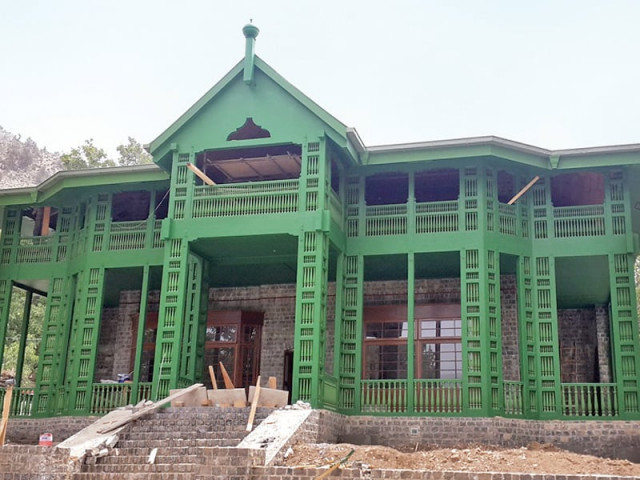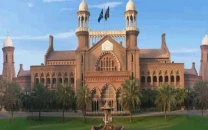Restoring the house that Mr Jinnah called home
The Quaid’s home and the city that hosted him during his last few days are not what they used to be

Restoring the house that Mr Jinnah called home
“We have a tradition in our Pashtun culture,” says Feroze, the manager of a guesthouse in Ziarat. “When there is a shaadi or a baby is born, we take out our guns. We’re happy! We fire!” A little after 1 am on June 15 last year, Feroze woke to the sound of gunfire. “I thought someone had their first baby boy because it was so intense,” he said. A few minutes later, he learned that Ziarat Residency, Mohammad Ali Jinnah’s home in his last few days in 1948, had been attacked by militants.
The bomb disposal squad removed six more bombs planted inside the house, but not before furniture, artifacts and photographs were burned and one police official lost his life.
Within a month, architect Nayyar Ali Dada was approached to oversee the Residency’s restoration. While he has a record of such conservation projects, it was Dada’s prior experience with the house that made him, as he puts it, a ‘natural choice’ — in the 1990s, the government recruited Dada to convert the Residency into a museum space after a fire.

Dada’s handwritten notes from a visit to the Residency last year are telling — “The house has been interfered with many times,” he writes. “The house had been painted red and white and it was used in a cold-blooded way as a guesthouse.” Additional kitchens were added, bathroom fittings ripped out and replaced. Rose-pink tiles had been installed in Jinnah’s bathroom, used as a guest bathroom. “The building had been mutilated,” Dada says. Much of the furniture — including the Quaid’s and Fatima Jinnah’s beds — was in use, the wooden surfaces covered with carved-out initials and messages.
Initially, a committee was formed to discuss the restoration and included architects and conservators, Kamil Khan Mumtaz and Yasmin Lari. “I suggested that all provinces should be involved in the restoration,” says Lari. “The woodwork could come from Khyber-Pakhtunkhwa, the stone from Balochistan or Sindh and so on. It could have been a national project.” Lari feels the damaged furniture and fittings “should be placed in the restored house in the same condition”.
However, Dada disagreed. “There were suggestions to cordon the building off as a ‘lesson’ and to make an exhibit of it. But a restoration project is not a design project,” he says. His aim was not to treat the Residency as an archival building –where elements cannot be tweaked from the original — but as a site where the spirit of the original must remain intact. Thus, began a Rs140-million project to recreate everything from the powder-blue tiles, faucets and commode in the Quaid’s bathroom, to the form of wiring originally used.

“We worked with a local architect, Naseer Ahmed Hijazi, and used old photographs and documentation from the earlier restoration,” Dada says.
It was only in May this year that the architects were able to begin work, ahead of an August 14 inauguration. “There was a great deal of inefficiency and bureaucracy,” Dada says. “The work was done under a lot of pressure.” He feels the work ‘should have been done more carefully’ and concedes, “The artifacts could have been created with a lot more accuracy, but we simply didn’t have the time. We tried to catch that period, that ambience, and I think we’ve been 80% successful.”
On the first day after Eid holidays and just six days shy of the prime minister’s visit for an inauguration ceremony that has changed dates four times, the house is alive with activity. Workers perch in the branches of the swooping juniper trees, trimming the foliage, a gardener tends to rows of coleusplants along the front porch and the whine and hammer of tools can be heard well beyond the curved driveway.
No matter which direction you face while standing in the house, you’re always looking out windows thrown open to the verdant gardens where yellow daisies grow — the light inside is hued a crisp, forest green, a paler shade of the original colour of the Residency’s exterior.
On this day, the workers have just finished polishing the wooden interior to a high gleam — the house is constructed of three kinds of wood, largely Burma teak and furniture has just arrived from Lahore, where it was constructed in typical colonial style. The workers are edgy, they turn their faces away as you enter the room. “We don’t tell anyone in the bazaar what we are working on,” one worker says. “The contractors don’t tell the people who they are or why they are here. It’s not safe.”
On the second floor, a terrace runs all the way across from Fatima Jinnah’s room to the Quaid’s and his personal physician’s rooms. The chief engineer, seated in the garden below, gestures frantically. “Please leave. The people from outside are feeling very uncomfortable that you’re here,” he says.
This kind of suspicion dogs you out the gate and into teahouses down the road. “We used to be friendlier,” remarks a local. “If a pardesi (outsider) came to Ziarat, we would give them a place in our homes. Now those homes are guesthouses and people are not mehmaannawaz (hospitable).”
Feroze concurs, saying the aftershocks of the 2013 attack linger. “This year, no visitors from Karachi or Punjab came to Ziarat. We had some locals from Pishin, Khuzdar and Turbat,” he says.
His guesthouse is vacant, the rooms locked. “Ziarat is the shehr of guesthouses,” he says. “Or it was.” He recalls that in the 1990s, he would practice his English with tourists who came to this hill station. At the time, the Residency’s doors were wide open, a lone police official deputed for security. “We used to visit the house every other day,” Feroze says. He claims he has seen its belongings squirreled away over the years, the carpets and furniture disappearing overnight only to be replaced by imitations.
While the restored house has a souvenir shop and a mosque, some in Quetta say they have no plans to visit Ziarat. “This house was not remade for us,” says Manan, a resident of Quetta who makes roughly Rs20,000 a month. “It was made for the Grade 20 and 22 people.”
Published in The Express Tribune, August 15th, 2014.
Like Life & Style on Facebook, follow @ETLifeandStyle on Twitter for the latest in fashion, gossip and entertainment.



















COMMENTS
Comments are moderated and generally will be posted if they are on-topic and not abusive.
For more information, please see our Comments FAQ